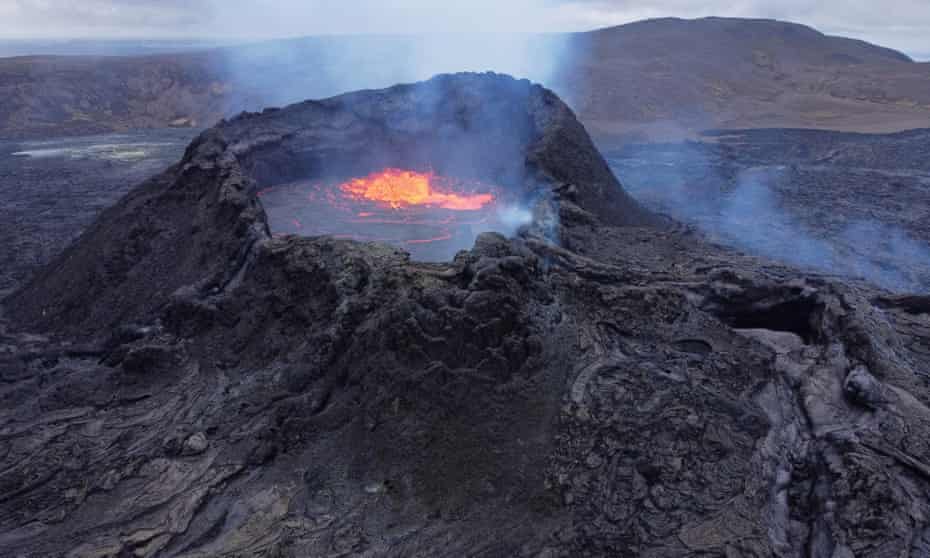Earth has seen five mass extinction events. What can we learn from them?
How such catastrophes occur remains mysterious. But research suggests that Earth may experience a cascade of disruptions when stressed

Five times in the last 500m years, more than three-fourths of marine animal species perished in mass extinctions. Each of these events is associated with a major disruption of Earth’s carbon cycle. How such catastrophes occur remains mysterious. But recent research increasingly points to the possibility that the Earth system – that is, life and the environment – may experience a cascade of disruptions when stressed beyond a tipping point.
As world leaders gather at Cop26 in Glasgow, it makes sense to rally behind concrete goals such as limiting warming to 1.5C. If we don’t meet such a goal, we’ll know it soon. Mass extinctions, on the other hand, may require tens of thousands of years or more to reach their peak. But if they are indeed the result of a disruptive cascade, we must act now to prevent such a runaway process from starting.
To see why, let’s first point out what we know.
Chemical analyses of ancient sedimentary rocks tell extraordinary stories of environmental change. A common element in these narratives is a crisis. Somehow the Earth system reaches a turning point where small fluctuations become large. In some cases, mass extinction ensues.
Many of these events are associated with increased releases of carbon dioxide (CO2) from volcanic eruptions. At least three of the five major extinction events occurred at such times.
But volcanic releases of CO2 are too weak to explain, on their own, the severity of environmental crises. So scientists also consider other potential stressors. One idea focuses on releases of methane, a strong greenhouse gas. Another hypothesizes that volcanoes could effectively blow up sediments rich in coal or other organic material, thereby converting them to CO2.
My own recent research suggests that such case-by-case attributions are unnecessary. It turns out that the most severe environmental crises fall into either of two groups. In one group – the majority – carbon levels increase at a typical rate. In the other – four of the five great mass extinctions – carbon levels increase somewhat faster.
If the carbon cycle is pushed out of its equilibrium too rapidly, it may reach a tipping point beyond which the cycle itself greatly amplifies the original fluctuation. The resulting Earth-system disruption would then exhibit the intrinsic properties of the carbon cycle rather than special properties of the perturbation that initiated the disruption. This reasoning explains the common rate at which carbon levels often increased in the past. It also reflects well-established features of complex nonlinear systems.
In this view, mass extinction events are driven not just to the tipping point, but beyond it. The extra kick may be responsible for their lethality.
Let’s now return to the risk of a modern catastrophe. Human activities are producing CO2 at a much faster rate than massive volcanism produced CO2 in the past. While that seems scary, we must recognize that the run-up to the crises of the past occurred over a much greater expanse of time than modern climate change. This means that the modern tipping point can be expressed in terms of total CO2 production rather than its rate. A simple calculation suggests that if we do not significantly cut back CO2 emissions, then we risk passing the threshold before the end of the present century.
This reasoning does not eliminate alternative explanations that call upon special sources of carbon. Moreover, the available data do not rule out mechanisms, such as ecological change, that could arrest a runaway process before it becomes severe. Nevertheless, the calculations are consistent with our present understanding of the carbon cycle.
These ideas are part of a continuing scientific effort to unravel some of the deepest mysteries of our past, not only to help inform our understanding of the risks of modern climate change, but also to discover how our world came to be. And therein lies a message for our political leaders convening at Cop26: let us not contribute to the risk of a sixth extinction. Efforts to limit CO2 emissions now may pay dividends further into the future than we can imagine.
-
Daniel H Rothman is a professor of geophysics at the Massachusetts Institute of Technology. He co-directs MIT’s Lorenz Center, which is devoted to learning how climate works